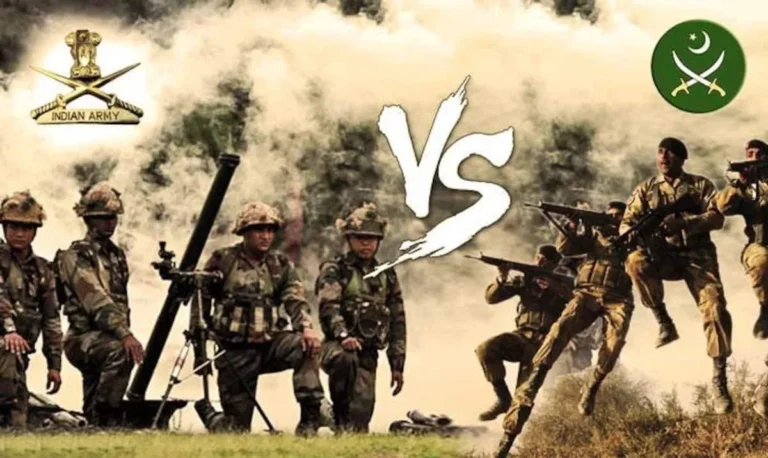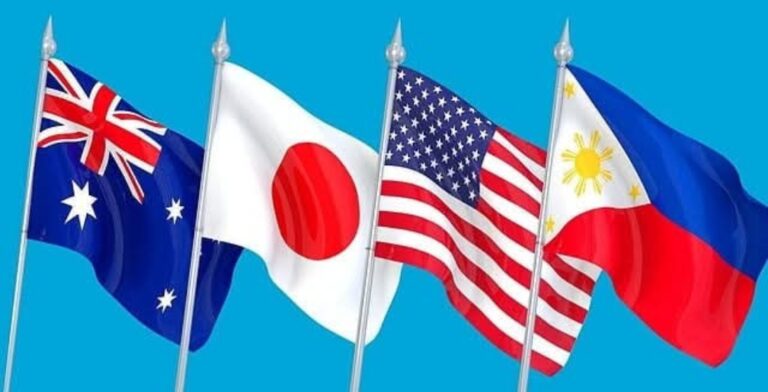Global Strategic and Defence News (GSDN) started its foray on November 11, 2022 as a forum to provide accurate analysis on geopolitical and defence issues that concern the world at large
Zelensky Calls Talks With Trump ‘Best Yet’, But Here Is The Deal Breaker: At Current Rates, Russia Would Need Centuries And Tens Of Millions To Capture Ukraine
Ukrainian President Volodymyr Zelensky has called his recent chat with US President Donald Trump at the Vatican “the best one yet.” The two leaders met briefly on the sidelines of Pope Francis’s funeral in April, discussing US sanctions and Ukraine’s air defense situation.
The timing was crucial for Ukraine. There were growing concerns that the US might pull back support for Kyiv or abandon peace talks altogether. But both sides described the talks as positive – this was their first face-to-face since their tense Oval Office meeting back in February. Following that meeting, Trump openly questioned whether Russia’s President Vladimir Putin was truly interested in peace, signaling that he was growing frustrated with the Russian leader.
“I think it was the best conversation with President Trump we’ve had,” Zelensky told reporters on Friday, with the remarks released on Saturday. “It may have been short, but it was definitely the most substantive.”
Zelensky didn’t go into specifics about the US sanctions, but he did note that Trump’s comments on the issue were “very strong.” He also reiterated his wish to strengthen Ukraine’s air defenses and mentioned to Trump that he hoped to buy American weapons. “I told him the quantity we need, and he said they’d work on it—but these things aren’t free,” Zelensky shared.
The two agreed that a 30-day ceasefire would be a good first step, and Zelensky said they’d be moving in that direction.
On Wednesday, the US and Ukraine signed a major minerals deal, one they’ve been working on since Trump’s return to the White House in January. Zelensky pointed to the Vatican meeting as the turning point, saying he was able to dispel Russian claims that Ukraine wasn’t serious about reaching an agreement with the US. “I’m confident that after our meeting, President Trump sees things a little differently now,” Zelensky said.

Under the new deal, the US and Ukraine will set up a joint investment fund, with the possibility of the US contributing more military aid.
Zelensky also took a shot at Putin’s proposed three-day ceasefire, which Russia said would run from May 8 to May 11. He made it clear that Ukraine is only interested in a longer truce. “We’re ready to move toward a ceasefire as soon as possible – if Russia is ready to make mirror steps. A full silence for at least 30 days would be fair,” Zelensky said in his nightly address on Saturday. “Russia needs to stop the war, stop the assaults, and stop the shelling.”
Kremlin spokesperson Dmitry Peskov framed the three-day ceasefire as a test of Ukraine’s willingness to seek peace, calling for “clear and definitive statements” from Kyiv.
The dates of Russia’s proposed ceasefire coincide with Russia’s Victory Day on May 9, marking the 80th anniversary of the defeat of Nazi Germany. World leaders like China’s Xi Jinping and Belarus’s Aleksandr Lukashenko are expected to be in Moscow for the occasion.
Zelensky made it clear that Ukraine wasn’t going to play along just to help Putin look good. “We’re not going to create a nice atmosphere for Putin’s exit from isolation on May 9,” he said. He also warned that Kyiv couldn’t be held responsible for anything that happens on Russian soil during the ongoing conflict.
In response, Russia’s foreign ministry accused Zelensky of making a threat.
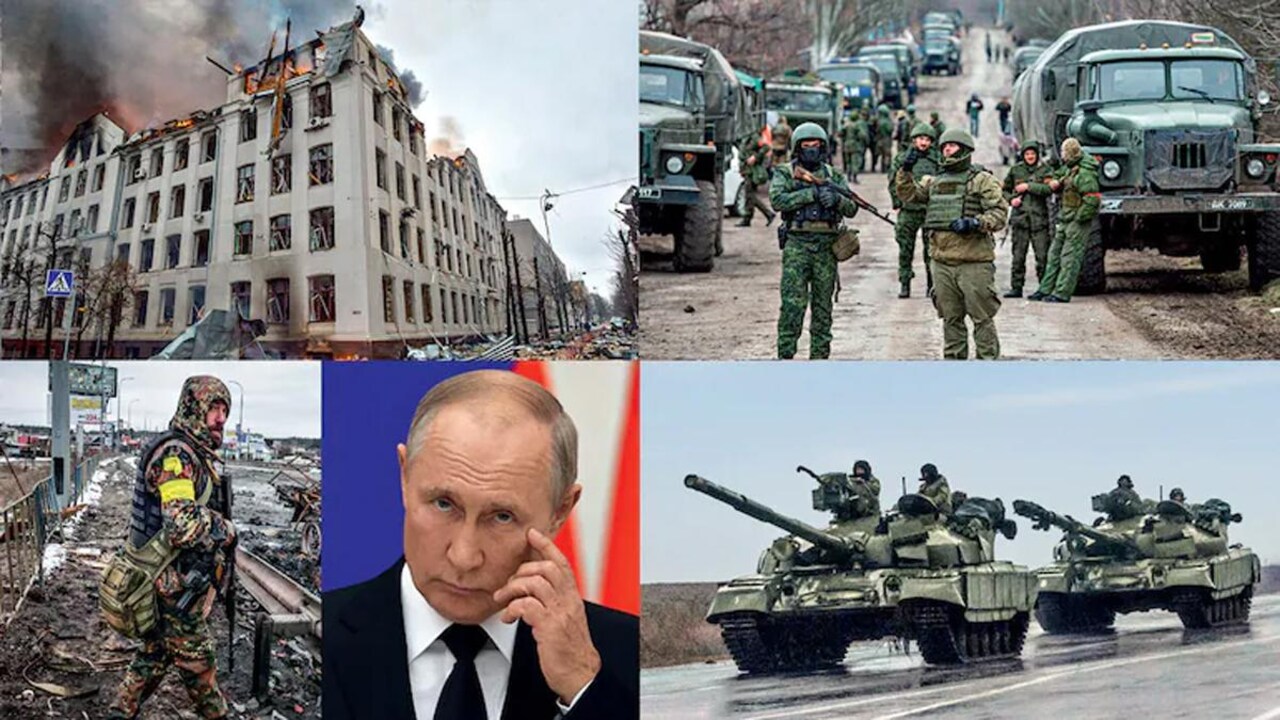
Russia Would Need Centuries And Tens Of Millions To Capture Ukraine
The fact is that while Russian forces made significant territorial gains in Ukraine in April, capturing approximately 68 square miles of land; however, the cost of these gains has been staggeringly high.
According to a statistician who compiles data primarily from official Ukrainian sources, including Kyiv’s general staff, Russia lost around 4,800 vehicles and sustained over 36,600 casualties, both dead and wounded. Despite the heavy losses, these advances have been strategically important, as Russia continues to expand its territorial control, albeit at an immense human and material cost.
In contrast, Ukrainian losses during the same period were relatively minimal, according to analyst Konrad Muzyka from Rochan Consulting in Poland. This suggests that Ukraine has been able to mount effective defenses, despite the ongoing Russian offensives. As of now, Ukraine spans 233,000 square miles, with approximately 19% of its territory under Russian occupation.
At the current rate of Russian territorial gains and losses, it would take Russia over two centuries, until the year 2256, to capture the entirety of Ukraine. This timeline is based on the rate of territorial capture in April, which, if sustained, would lead to the complete occupation of Ukraine at the devastating cost of 101 million casualties. To put this into perspective, Russia’s current population stands at 144 million, which means that capturing Ukraine would take a toll on Russia’s military that would be nearly impossible to recover from, considering the sheer scale of the losses.
Remarkably, these catastrophic losses haven’t yet completely crippled the Russian military’s capabilities in Ukraine. The Kremlin has managed to adapt to these challenges by equipping its forces with an increasingly eclectic mix of civilian vehicles, ranging from compact cars and scooters to even buses. This unconventional approach underscores the extent of Russia’s logistical struggles and the desperate measures it is taking to sustain its military presence.
In addition to these unconventional tactics, Russia is actively recruiting 30,000 new troops each month, as noted by General Christopher Cavoli, the commander of U.S. Army forces in Europe. This recruitment drive is so effective that, despite the heavy casualties, Russia’s military force in Ukraine is actually growing. According to Cavoli, the current Russian troop strength in Ukraine is around 600,000, almost double the size of the initial invasion force in February 2022. Many of the wounded soldiers are able to return to the frontlines after recovery, contributing to the continued replenishment of Russian forces.

So, how has Russia managed to sustain and even expand its recruitment efforts in the face of such staggering losses?
Two key factors have contributed: money and morale. Record enlistments are driven in part by high signing bonuses and the belief among some Russians that the war will soon come to an end. According to Janis Kluge, deputy head of the Eastern Europe and Eurasia Division at the German Institute for International and Security Affairs, the combination of financial incentives and the notion that victory is just around the corner has kept recruitment numbers high.
However, this situation raises questions about how long these factors can be sustained. As General Cavoli pointed out, Russia’s defense budget now accounts for 40% of all government expenditures, the highest level since the Cold War. For comparison, the United States spends only 13% of its federal budget on the military. This sharp increase in military spending has kept the Russian economy on a war footing, with the government prioritizing defense-related industries. Despite the massive casualties, the Russian economy has managed to maintain a relatively low unemployment rate of 2.4%, largely due to the employment generated by defense contracts and wartime production.
Yet, maintaining this level of spending comes at a significant cost. Russian Finance Minister Anton Siluanov has vowed to continue funding the military effort, even as revenue from energy exports has taken a hit due to falling oil prices and Ukrainian drone strikes on Russian energy infrastructure. In response, President Vladimir Putin has increased personal and corporate taxes and shifted the nation’s economic priorities to favor war industries, a move that is designed to support the military’s needs.
This ongoing commitment to warfare, despite the severe economic and human toll, suggests that Russian leaders are preparing for a long-term confrontation. The Russian regime has transformed its military, economic, and social structures to sustain this war, with the intention of confronting the West for the foreseeable future. According to Cavoli, this restructuring reflects Russia’s strategic objectives, which include not only the conquest of Ukraine but also a broader, long-term challenge to Western influence.
For Russia, the economic and political costs of continuing this war are immense, but there seems to be no sign of retreat. With massive military recruitment, unorthodox strategies, and unwavering political commitment from the Kremlin, the conflict is set to continue, with no clear end in sight. How long can Russia sustain this costly war, and at what cost will it ultimately come to an end?

The Last Bit,
The war in Ukraine shows no sign of slowing down, with both sides entrenched in a protracted and costly conflict. While Ukraine’s territorial losses have been limited in recent months, Russia’s gains have come at an extraordinary cost, with tens of thousands of casualties and vast material losses. The scale of Russian casualties, along with the ongoing logistical challenges, paints a grim picture of the human toll the war is taking on Russia’s military and population.
Despite this, the Kremlin has managed to sustain and even expand its military presence in Ukraine through unconventional methods, such as using civilian vehicles and recruiting tens of thousands of troops each month. Financial incentives, high signing bonuses, and a morale boosted by hopes for an end to the war have allowed Russia to maintain a steady influx of new recruits. However, the long-term sustainability of this strategy remains uncertain, as the war places enormous strain on Russia’s economy, with military spending accounting for a significant portion of government expenditures.
With no clear end in sight, Russia’s commitment to the war is unwavering. President Vladimir Putin and his regime have restructured Russia’s economy and military to support a prolonged confrontation with Ukraine and, by extension, the West. As the war drags on, it raises difficult questions about how long Russia can endure the economic and human costs, and what the ultimate outcome will be.
The discussions between Ukrainian President Zelensky and US President Trump, though positive, indicate the complexities of the situation. The need for continued support from the US and international community remains critical for Ukraine, but the path to peace is fraught with challenges. The prospect of a ceasefire or lasting peace seems distant as both sides remain entrenched in their positions, and the war shows little indication of de-escalating in the near future.
Ultimately, the question is whether Russia can continue its costly campaign for centuries to come or whether the international community can help bring an end to this devastating conflict before even more lives are lost.
Israel Escalates Gaza Offensive As Hostage Talks Crumble And Qatar Draws Fire. A War With No Winners Yet, Only Mounting Costs
Gaza is bleeding, talks are dying, and Israel prepares to strike again, this even as diplomatic efforts collapse into political rubble, leading Israel is once again reaching for its military playbook.
In a move that signals a renewed and potentially devastating expansion of its Gaza offensive, the Israeli Defense Forces announced on Saturday it will mobilize thousands of reservists in the coming days. The announcement comes as ceasefire talks, mediated by Egypt and Qatar, have all but stalled, and the humanitarian catastrophe in Gaza deepens.
According to reports, IDF Chief of Staff Lt. Gen. Eyal Zamir presented a plan on Friday to Prime Minister Benjamin Netanyahu and Defense Minister Israel Katz, aimed at “intensifying pressure” on Hamas. That plan, if approved by Israel’s Security Cabinet, likely as soon as Sunday, will pave the way for expanded military operations in northern and central Gaza, including the evacuation of civilians in these already devastated zones.
It’s a page taken straight from the Rafah strategy – tell civilians to move, then send in the firepower. But with over 50,000 Palestinians already dead since the war began following Hamas’ October 7 attack, the idea that civilians can simply relocate “safely” feels more like a cruel formality than actual concern.
Unsurprisingly, the news has rattled the families of the remaining 59 Israeli hostages still held by Hamas. Many of these families, already disillusioned, issued an urgent statement warning that any further escalation “will put the hostages – both the living and the deceased – in immediate danger.” The Hostages and Missing Families Forum made it clear: the vast majority of the Israeli public still considers their return the highest moral priority, a message increasingly ignored by the country’s leadership.
Negotiations for a deal to release the hostages have hit a dead-end. Hamas is demanding a permanent ceasefire and full Israeli withdrawal from Gaza. Israel, on the other hand, accuses Hamas of rejecting “reasonable offers” though what’s considered “reasonable” is now blurred in a war without clear boundaries or trust.
Fueling tensions even further, Netanyahu has taken aim at Qatar, a key mediator, accusing it of “playing both sides” and challenging the Gulf state to pick a side: “civilization or Hamas barbarism.” The remarks, coming after Israeli media reports that Qatar pressured Hamas to reject an Egyptian proposal, triggered a sharp backlash. Qatar dismissed the accusation as a distortion of its diplomatic role and shot back, accusing Israel of using humanitarian aid as a weapon of political coercion. “Is this the civilization being promoted?” asked its foreign ministry.
And then came Netanyahu’s bombshell: for the first time, he openly stated that defeating Hamas takes precedence over rescuing the remaining hostages, marking a sharp shift from his earlier “dual goal” narrative.
As for diplomacy, what little hope remained may have just been extinguished. And as Netanyahu cancels his upcoming visit to Azerbaijan, citing “developments in Gaza and Syria,”, it is clear that the war is far from over, and the path forward looks more like a tunnel with no light at the end.
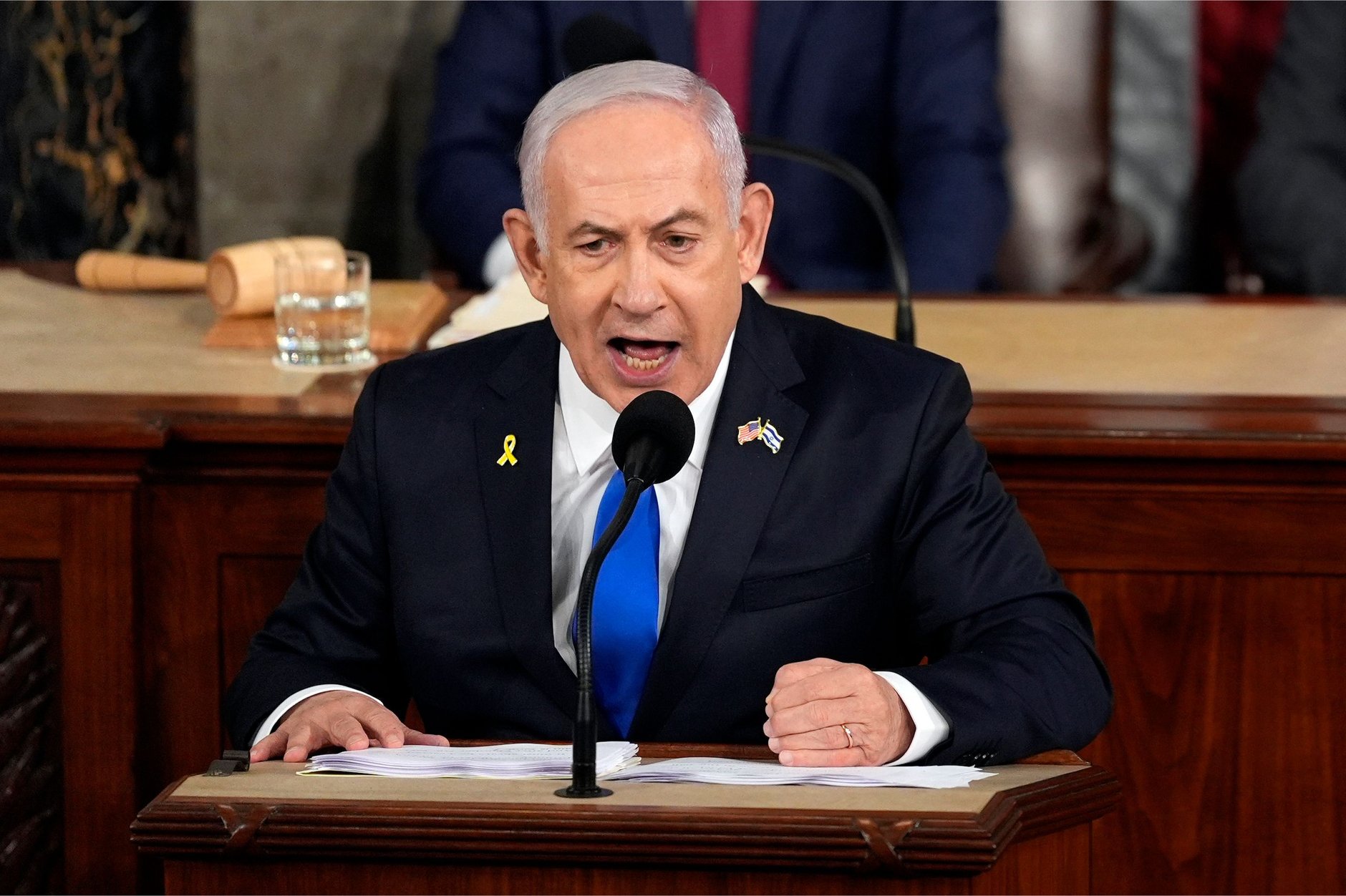
Israel Slams Qatar in Diplomatic Crossfire. Mediation or Manipulation?
Now looking at the spat between Israel and Qatar in detail – a move that further dims the prospects of a ceasefire in Gaza. It’s the latest in an increasingly bitter war of words that reflects not just the geopolitical fragility of the region but the unraveling trust between supposed diplomatic partners. Qatar, for its part, wasted no time in firing back. In a pointed statement, Foreign Ministry spokesperson Majed Al-Ansari called Israel’s accusations “inflammatory,” and said they fall “far short of the most basic standards of political and moral responsibility.”
Qatar has long been the primary backchannel to Hamas, leveraging its influence to broker temporary truces and negotiate hostage releases. But Israel’s latest attack on Doha’s integrity signals a potential breakdown in even that fragile framework. Prime Minister Netanyahu’s inflammatory rhetoric, suggesting Qatar must pick between “civilization” and “Hamas barbarism”, drew international attention, not only for its tone but for what it implies: a rejection of mediation unless it aligns entirely with Israeli terms.
Al-Ansari did not hold back in his response. In a statement posted to X (formerly Twitter), he likened Israel’s justification for its military campaign to that of “historical regimes” that cloaked atrocities under the guise of moral crusades. “Is this truly the model of ‘civilization’ being promoted?” he asked, sharply criticizing the portrayal of Israel’s offensive as a righteous mission.
He then posed a blistering rhetorical question: “Were the releases of no fewer than 138 hostages achieved through so-called ‘just’ military operations, or through the very mediation that is now being unjustly criticized and undermined?” The answer, he implied, is obvious – it was Qatar’s mediation, not military aggression, that delivered results.
Qatar also spotlighted the increasingly dire humanitarian conditions inside Gaza, which has now been under an Israeli siege for months. Al-Ansari condemned what he described as a “suffocating blockade,” a systematic denial of food, medicine, and shelter, and the use of humanitarian aid as “a tool of political coercion.” These are not isolated observations, major international aid organizations have echoed similar concerns, warning that famine and disease may soon eclipse the bombs in their lethality.
The diplomatic clash comes as Israel’s war cabinet approved plans for an expanded operation in the Gaza Strip, according to multiple Israeli media reports. That plan includes a likely ground operation in the central and northern regions of Gaza – an area already decimated by airstrikes and mass displacement. The move signals that Israel is no longer waiting for a negotiated solution and is preparing for deeper military engagement, regardless of the ongoing hostage crisis or international pressure.
At the heart of the stalemate lies an irreconcilable impasse: Israel demands the disarmament of Hamas and its total exclusion from any future role in governing Gaza – a non-starter for Hamas. Meanwhile, Hamas insists on a permanent ceasefire and the full withdrawal of Israeli forces from the enclave before it releases any more hostages. Both sides accuse the other of stonewalling reasonable proposals, and both seem locked into maximalist positions that render negotiations inert.
The war, now approaching its twentieth month, was triggered by Hamas’ October 7, 2023 cross-border assault that killed around 1,200 Israelis and saw 251 taken hostage. Since then, more than 50,000 Palestinians, many of them civilians, have been killed in Israel’s relentless military campaign, according to Gaza health officials. Aid groups are warning that the continued blockade and bombardment could lead to a full-scale humanitarian collapse.
With diplomacy on life support and the rhetoric between nations turning poisonous, the international community is left asking: if Qatar – arguably the only player with a communication channel to Hamas – is being alienated, then who, exactly, is left to broker peace?

U.S. and Israel Close In on Deal to Resume Gaza Aid Without Empowering Hamas
Meanwhile, moving away from Qatar, in what could become a significant development in addressing the worsening humanitarian catastrophe in Gaza, the United States, Israel, and a coalition of international players are reportedly nearing a deal to restart humanitarian aid to Palestinians while implementing a new system designed specifically to sideline Hamas and prevent the misuse of aid resources.
The emerging agreement is the result of intense behind-the-scenes negotiations involving U.S. and Israeli officials, private companies, and a newly formed international humanitarian foundation backed by both governments and philanthropic donors. According to sources familiar with the plan, the new mechanism is aimed at resolving one of the most sensitive challenges of the war: how to get urgent aid to civilians in Gaza without allowing Hamas to exploit it for political or military gain.
A Humanitarian Clock Is Ticking
The urgency is undeniable. The collapse of a ceasefire agreement two months ago led Israel to halt almost all deliveries of food, water, and medicine into Gaza. The result has been devastating. UN agencies now warn that Gaza’s remaining food supplies could run out within days. Israeli officials estimate total depletion in about three to four weeks. With health infrastructure already decimated and nearly 2 million Gazans displaced, the enclave has plunged into chaos, lawlessness, and mass suffering.
What little humanitarian aid enters Gaza today is either looted, diverted, or overwhelmed by demand. The resumption of Israeli strikes has made delivery corridors unsafe and added further displacement, creating a situation aid workers describe as nearing total collapse.
Behind the Scenes, The Architecture of the New Plan
At the core of the emerging deal is the creation of an internationally governed foundation composed of humanitarian leaders and overseen by an advisory board featuring prominent global figures. This entity would coordinate the procurement, logistics, and distribution of aid independently of Hamas or other militant groups.
According to sources:
—Secure Aid Distribution Sites will be constructed in parts of Gaza where civilians can receive one standardized aid package per family each week — covering food, water, medicine, and basic hygiene needs.
—Israel has committed to financing and building the infrastructure required to enable these secure zones.
—A private U.S. logistics company will manage the supply chain and security within the compounds, ensuring neutrality and professionalism.
—While IDF forces will not be directly involved in the aid distribution or present within the compounds, they will offer perimeter security in the broader area to deter interference by Hamas or other armed factions.
—Officials involved believe this system will not only address the humanitarian crisis but also strategically weaken Hamas, which has historically benefited from controlling and taxing incoming aid, or redirecting it to bolster its influence.

Trump Weighs In, A Blend of Humanitarian Push and Political Timing
President Donald Trump, who has taken an active role in regional diplomacy, revealed on Sunday that he urged Israeli Prime Minister Benjamin Netanyahu to allow aid into Gaza. Speaking aboard Air Force One, he said:
“You got to be good to Gaza. Those people are suffering. There’s a very big need for food and medicine, and we’re taking care of it.”
The remarks come amid speculation that the U.S. is eager to showcase a functioning humanitarian plan ahead of Trump’s scheduled Middle East visit on May 13, during which he will stop in Saudi Arabia, Qatar, and the UAE though he is not expected to visit Israel directly.
A State Department official hailed the mechanism as a breakthrough, stating that it balances humanitarian urgency with “safeguards to ensure assistance is not diverted, looted, or misused by terrorist groups such as Hamas and Palestinian Islamic Jihad.”
The official added that all participating UN and international agencies will be expected to work within the framework of the new mechanism signaling a coordinated global response, albeit one that limits Hamas’s ability to manipulate resources for its benefit.
Aid Before Escalation
Timing is everything. Israeli officials have stated that they want the new system operational before expanding ground operations in Gaza, which could begin later this month if hostage negotiations fail to produce results. Israel’s security cabinet is expected to convene on Sunday to approve the mobilization of additional reserve troops and endorse broader military plans.
If implemented in time, the humanitarian mechanism may serve both as a critical lifeline for civilians and a geopolitical buffer amid rising scrutiny of Israel’s tactics and the growing chorus of concern from the international community over conditions in Gaza.
However, doubts remain over whether aid distribution sites will be secure enough, whether Hamas will respect their neutrality, and whether this new system can scale fast enough to meet the level of need.
Still, for now, hope rests on engineering and diplomacy, not warfare.

The Last Bit, A War With No Winners Yet, Only Mounting Costs
Israel’s decision to mobilize thousands of reservists signals a sharp escalation in a war that has already inflicted staggering human costs, particularly in Gaza. With over 50,000 Palestinian lives lost and the humanitarian crisis nearing collapse, the resumption of intensified ground operations underscores a grim reality: diplomacy is failing, and military objectives are once again taking precedence over negotiations.
The hostage crisis once presented as a parallel priority alongside the goal of dismantling Hamas appears to have taken a backseat. Prime Minister Netanyahu’s recent statement that defeating Israel’s enemies outweighs securing the hostages has only deepened public outrage and despair among families of those still held captive. Their fears are not misplaced; as Israel gears up for a broader offensive, the lives of the remaining 59 hostages hang by an even thinner thread.
Meanwhile, the diplomatic fallout is widening. Israel’s pointed criticism of Qatar, a key mediator in the ceasefire talks, risks alienating one of the few countries with leverage over Hamas. Qatar’s rebuke – painting Israel’s statements as inflammatory and morally deflective – shows just how fractured the peace process has become. Accusations and counter-accusations have replaced constructive engagement, with neither side showing flexibility on their demands. Israel insists on Hamas’ complete disarmament and exclusion from future governance, while Hamas demands a permanent ceasefire and full Israeli withdrawal, an impasse with no visible middle ground.
Even as humanitarian aid talks involving the U.S. and a new international foundation inch forward, their success is far from guaranteed. Aid may soon resume under a new mechanism designed to bypass Hamas, but questions remain about its sustainability, neutrality, and ability to address Gaza’s overwhelming needs amid ongoing conflict. The proposed compounds for aid distribution, though potentially life-saving, are a patchwork solution in a collapsing system.
With Israel’s military expansion looming and diplomatic efforts floundering, the region teeters on the edge of deeper chaos. The Netanyahu government’s strategy now seems driven less by compromise and more by calculated pressure, hoping to shift the balance on the battlefield and at the negotiating table. But as history shows, in wars where civilians bear the brunt and negotiations are undermined by distrust, there are no true victories – only prolonged suffering, geopolitical alienation, and a haunting question: how much more devastation will it take before diplomacy is truly given a chance?
Western Europe at Crossroads between USA, China and Russia: Navigating a Complex Geopolitical Landscape
By: Priya Naik. Research Analyst, GSDN
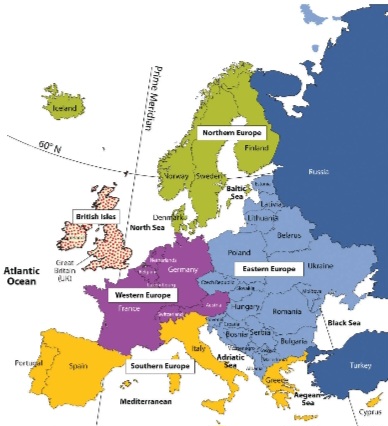
The 21st century has witnessed a profound transformation in global power dynamics, marked by China’s economic dominance and Russia’s assertive resurgence. These shifts have disrupted the post-Cold War unipolar order dominated by United States (hereafter, US), creating a strategic triangle where Western Europe must navigate competing pressures from Washington, Moscow and Beijing. While maintaining its traditional transatlantic security alliance through NATO, Europe now faces dual challenges that are to manage Russia’s hybrid warfare tactics and territorial ambitions, particularly in Eastern Europe region, while addressing China’s expanding economic footprint through initiatives like the Belt and Road Initiative.
This complex landscape forces Western Europe to balance its liberal democratic values with pragmatic economic interests. China’s investments in critical infrastructure and technology sectors have exposed its vulnerabilities, encouraging EU wide screening mechanisms for foreign acquisitions. Simultaneously, Russia’s energy leverage and disinformation campaigns test European cohesion. The region’s response reflects a cautious, multifaceted strategy reinforcing North Atlantic Treaty Organisation (NATO) deterrence against Russian aggression while pursuing selective economic engagement with China, albeit with heightened scrutiny of strategic dependencies.
Historical Background and Strategic Context
NATO, established in 1949, represented the cornerstone of Western Europe’s security framework against Soviet expansionism in the region. This alliance formalised US protection of Western Europe during the Cold War and beyond. Consecutively, Western European nations developed significant energy dependencies on Russia, which by 2021 supplied 25% of the EU’s oil and 45% of its gas imports. Despite pledges to sever these ties following Russia’s 2022 invasion of Ukraine, Europe continues to maintain energy connections with Russia in 2025, with countries like France, Hungary, Austria and Spain still purchasing Russian fossil fuels.
EU-China relations, formalised in 1975, entered their diplomatic stage between 2000-2004, with mutual recognition as strategic partners in 2003. China’s economic presence in Europe expanded dramatically after the 2008 financial crisis in Asia. The Belt and Road Initiative has evolved in Europe, shifting from infrastructure projects toward financial and monetary connectivity in Western Europe, while Eastern European nations continue to embrace Chinese investment, creating a “two-speed Europe” regarding China engagement. EU policy now characterises its relationship with China as a mixture of “partnership, competition and systemic rivalry“.
The EU simultaneously favours multilateralism while adhering to American “de-risking” methods toward China, seeks economic revitalisation while hesitating to expand technological cooperation with China, and seeks strategic autonomy while maintaining its reliance on the US. Russia’s invasion of Ukraine has contributed to this problem, sparking discussions about NATO’s modern mission and producing a paradoxical scenario in which actions taken to reassure Eastern partners exacerbate rather than lessen tensions with Russia.
Western Europe and Russia: Confrontation and Containment
The relationship between Western Europe and Russia has deteriorated significantly since Russia annexed Crimea in 2014, evolving into a complex pattern of containment strategies, economic sanctions, energy politics, and information warfare. This confrontation has reshaped European security architecture, energy policies and diplomatic relations simultaneously exposing internal divisions within the European Union and NATO regarding how to effectively counter Russian aggression.
Following Russia’s annexation of Crimea in March 2014, the European Union implemented comprehensive sanctions targeting the country. These economic restrictions included import bans on Crimean products, prohibitions on EU based companies investing in the region and export restrictions on goods related to transport, telecommunications and energy sectors. The sanctions have repeatedly been extended since their implementation, aimed at imposing economic costs on Russia for violating Ukraine’s territorial integrity.
NATO was brought together by Russia’s aggressive actions in Ukraine, which led to the bolstering of defences along its eastern flank. To show the “allies’ solidarity, determination, and ability to act by triggering an immediate allied response to any aggression,” NATO built an enhanced forward presence in Estonia, Latvia, Lithuania and Poland. In January 2017, the United States demonstrated its presence in Central Europe and commitment to collective defence by sending M1A2 Abrams tanks to Poland further solidifying this commitment.
Russia has deployed sophisticated hybrid warfare tactics against Europe, blending conventional military threats with non-kinetic methods targeting political, social and economic vulnerabilities. With Russia using its position as a major supplier as a weapon to influence European countries that rely on its resources, the energy sector has turned into a vital battlefield. State owned businesses like Gazprom have been carefully employed by the Kremlin to further its foreign policy goals and keep influence over neighbouring nations.
Disinformation campaigns represent another pillar of Russia’s hybrid strategy. France, Germany and Poland have become “permanent” targets for Russian disinformation attacks, with narratives tailored to each country’s specific sensitivities. In France, these operations focused on the Olympic Games; in Germany, they exploited concerns over migration and security; while in Poland, they promoted narratives portraying Ukrainian refugees as burdensome. These tactics seek to undermine European resolve against Russian aggression, promote division, and weaken faith in institutions.
Russia’s full-scale invasion of Ukraine in February 2022 marked a watershed moment in European security. The war prompted unprecedented European unity in supporting Ukraine and implementing sanctions against Russia. Just two days after Germany suspended the Nord Stream 2 pipeline project, Russia launched its invasion demonstrating the interconnection between energy policy and security concerns.
The war accelerated Europe’s efforts to diversify its energy sources and reduce dependence on Russian fossil fuels. Nord Stream 2, once a symbol of Germany’s policy of building “political bridges through trade,” became emblematic of a failed strategy that had driven the country into “fatal dependence on Russian oil and gas“. Russia’s subsequent attacks on Ukraine’s critical energy infrastructure in February 2024 further highlighted its willingness to weaponise energy to weaken Europe’s supply during its transition away from Russian resources.
There are still major differences over Russia policy within the European Union and NATO, despite greater cooperation after Russia’s invasion of Ukraine. Different member nations still have different opinions about the Russian threat, especially when it comes to whether Russia will attack NATO countries in the Baltic. Developing a cohesive, long term plan is made more difficult by these conflicting threat perceptions.
Southern NATO members have expressed concerns that the alliance focuses disproportionately on Eastern security challenges while neglecting threats from the South, weakening overall solidarity and cohesion. Additionally, logistical challenges in moving troops and equipment across Europe to the Eastern flank demonstrate practical limitations in NATO’s defensive capabilities. These divisions reflect varied historical experiences, geographic positions and economic ties with Russia, creating persistent fault lines in European policy coordination.
Western Europe and China: Cooperation and Caution
Western Europe’s relationship with China has evolved into a complex dynamic of economic interdependence tempered by growing strategic caution. While trade and investment remain central pillars, geopolitical tensions, human rights concerns, and competing visions of global order have led Europe to adopt a more guarded approach.
China is the EU’s largest import partner ($588.86 billion in 2024) and third largest export market ($242.57 billion), creating a record $346.28 billion trade deficit. The proposed EU-China Comprehensive Agreement on Investment (CAI), concluded in principle in 2020, seeks to remove barriers like joint venture requirements and technology transfer mandates in the manufacturing sector representing 50% of EU foreign direct investment in China. However, ratification remains stalled due to political tensions.
The EU has increasingly criticised China’s policies in Xinjiang and Hong Kong, with the European Parliament urging targeted sanctions against Chinese officials and restrictions on dual use technology exports. This aligns with the bloc’s “de-risking” strategy, which aims to diversify supply chains and reduce critical dependencies without full decoupling. The approach reflects tensions between economic pragmatism and values-based diplomacy.
Initiatives like Italy’s 2019 entry to the Belt and Road Initiative (BRI) and COVID-19 vaccine diplomacy in Central Europe, which revealed the EU’s coordination flaws during the pandemic, were significant victories for China. These initiatives have encountered increasing doubts, though, as forceful diplomacy and human rights issues have caused China’s soft power in Europe to decrease.
The EU has strengthened security and tech partnerships with Indo Pacific democracies like Japan and India while aligning more closely with U.S. positions on technology controls and maritime security. This balancing act seeks to counter Chinese influence without fully mirroring Washington’s confrontational stance.
The EU-China partnership currently functions within more constrained boundaries, combining increased competition in technology and governance models with selective collaboration in trade and climate. Europe faces a tightrope walk that calls for constant cooperation among its frequently disparate member states in order to preserve economic involvement while upholding democratic norms and fostering resilience against coercive techniques.
Strategic Dilemmas for Western Europe
Western Europe faces compounding strategic dilemmas as it navigates competing pressures from global powers, internal divisions, and the urgent need to secure critical supply chains. The EU’s attempt to balance economic pragmatism with geopolitical resilience has exposed vulnerabilities in its approach to the US-China-Russia triangle.
The US push for alignment against China and Russia clashes with Europe’s economic realities. While 66% of EU-China trade involves Chinese imports ($588.86 billion in 2024), distancing a risk of disrupting green transition industries dependent on Chinese rare earths and EV components. Simultaneously, Trump’s trade policies and demands to reduce Chinese reliance exacerbate transatlantic tensions, with the Euro depreciating 12% since October 2024 due to growth concerns. Russia’s energy coercion evident in its 2024 attacks on Ukrainian infrastructure has accelerated Europe’s shift to renewables, though complete gas independence by 2025 requires tripling clean energy deployment rates.
There are serious vulnerabilities because China controls 90% of the world’s solar panel output and 98% of EU imports of rare earth elements. Given current rates below 1%, the EU’s ambition to get 25% of essential minerals through recycling by 2030 is viewed with scepticism. As evidenced by recent trade restrictions impacting $22.7 billion in bilateral trade, this reliance makes it more difficult to implement tariffs to stop Chinese EV dumping.
Diverging threat perceptions persist:
- Eastern members prioritise containing Russia through NATO
- Southern states focus on Mediterranean migration and energy security
- Germany and France clash over defence spending (2.1% vs 1.9% of GDP)
These divisions hinder consensus on China policy, with Italy maintaining BRI ties despite EU de-risking directives.
Macron’s vision of “European sovereignty” faces implementation challenges:
- Only 11 EU states meet NATO’s 2% defence spending target
- The European Defence Fund accounts for just 0.5% of EU’s 2025 budget
While von der Leyen’s “de-risking” strategy aims for 40% clean tech self-sufficiency, China’s control of pharmaceutical precursors (79%) and renewable supply chains undermines these goals.
The strategic future of the EU depends on balancing effective deterrence with economic interdependence, a challenge made more difficult by China’s systemic rivalry and US unpredictability. Though there are still many trade-offs between security and prosperity, success necessitates overcoming internal fragmentation while speeding up energy transitions and supply chain diversity.
Future Outlook: Scenarios and Recommendations
As of 2025, Western Europe finds itself at a critical geopolitical crossroads, forced to redefine its position between an increasingly assertive China and a confrontational Russia alongside the dwindling trust on USA. This complex landscape requires careful strategic consideration as Europe navigates its future in a rapidly evolving multipolar world. The following scenarios and recommendations outline potential pathways forward for European policymakers.
Scenario 1: Continued Alignment with U.S.
In this situation, Western European nations prioritise their traditional transatlantic alliance, reinforcing NATO commitments and maintaining firm positions against Russian aggression while adopting increasingly cautious stances toward China. This approach builds on historical security frameworks but presents significant challenges. The strengthened military posture provides security reassurance for Eastern European members feeling threatened by Russian activities. However, economic backlash from China could severely impact European economies dependent on Chinese markets and investment. Additionally, this alignment reduces Europe’s diplomatic leverage as an independent mediator in global conflicts.
Scenario 2: Strategic Autonomy and Middle Path
Under this scenario, Europe pursues its “strategic autonomy” by reducing vulnerabilities and increasing its capacity to act independently. This approach involves pragmatic economic engagement with China while maintaining vigilance against Russian hybrid threats. Europe positions itself as an independent power pole in a multipolar world, pursuing its interests rather than automatically aligning with American positions. This path requires significant investment in European defence capabilities, technological independence, and energy self-sufficiency. The EU has already made steps toward this direction by placing strategic autonomy at the heart of its foreign policy.
Scenario 3: Fragmentation and Policy Paralysis
The most concerning scenario involves increasing fragmentation of European policy positions, creating an incoherent stance that weakens collective influence. This “Single Market Fatigue” is already evident in many policy areas. Internal divisions between Eastern and Western Europe on Russia policy and Northern and Southern Europe on economic approaches to China could paralyse decision-making. This fragmentation would allow both Russia and China to exploit divisions, practising “divide and rule” diplomacy that undermines European cohesion and sovereignty.
To successfully manage these obstacles, Europe should:
- Boost investments in green energy transformation and technological independence, which will cost about $159 billion a year by 2030 to establish a self-sustainable energy sector by 2040.
- To avoid fragmentation, strengthen diplomatic coordination channels at the EU level, especially when creating cogent strategies for China and Russia.
- Develop strategic alliances with other regional actors, such as Japan, ASEAN, and India, to increase balancing choices and diversify reliance.
- Boost resistance to hybrid threats and disinformation campaigns by enhancing inter-institutional collaboration and expanding on current frameworks such as the Joint Framework on Countering Hybrid Threats.
Western Europe would be able to navigate the increasingly complicated geopolitical terrain between China and Russia while upholding its principles and interests with the support of these concerted efforts.
BIMSTEC 2025
By: Sonalika Singh, Research Analyst, GSDN

The Bay of Bengal Initiative for Multi-Sectoral Technical and Economic Cooperation (BIMSTEC) stands as a testament to the collaborative spirit of South and Southeast Asia. Established in 1997, BIMSTEC comprises seven member states: India, Bangladesh, Bhutan, Myanmar, Nepal, Sri Lanka, and Thailand. With a combined population of over 1.8 billion people and a significant share of the global GDP, BIMSTEC represents a dynamic and diverse region. The year 2025 marks a pivotal moment for this regional organization, with the 6th BIMSTEC Summit held in Bangkok, Thailand, from April 2 to 4. This summit not only underscores the organization’s commitment to regional integration but also sets the stage for future cooperation across various sectors.
It brought together the leaders of seven neighboring countries amid a period of global uncertainty. This summit served as a much-needed opportunity to revitalize the regional grouping, which had long remained stagnant. Originally envisioned as a bridge between South Asia’s SAARC and Southeast Asia’s ASEAN, BIMSTEC has struggled in recent years due to a lack of direction and political challenges.
The diminishing relevance of SAARC, especially after the deterioration of India-Pakistan relations post-2014, has prompted India to shift focus toward BIMSTEC. Meanwhile, sub-regional efforts like the Bangladesh-Bhutan-India-Nepal (BBIN) initiative lost momentum when Bhutan’s Parliament rejected the proposed Motor Vehicles Agreement. In this context, New Delhi has invested fresh energy into BIMSTEC, viewing it as a platform to enhance regional cooperation.
Although the pandemic disrupted the planned biennial summit cycle, the very fact that this summit was held despite recent natural disasters, including an earthquake in Myanmar and Thailand is a positive development. The summit resulted in several notable outcomes. Among them was the formation of a BIMSTEC Chamber of Commerce, and progress on the long-delayed India-Myanmar-Thailand Trilateral Highway, which aims to connect India’s North-East to Southeast Asia, potentially transforming it into a regional hub. Given the region’s vulnerability to natural disasters, the summit also underscored the urgent need for a joint disaster management mechanism.
Beyond multilateral engagements, the summit also enabled important bilateral interactions. Prime Minister Narendra Modi and Bangladesh’s Chief Adviser Muhammad Yunus used the opportunity to address lingering tensions over issues such as minority rights, border killings, and the presence of former Prime Minister Sheikh Hasina in India. Mr. Modi’s call to avoid inflammatory rhetoric between neighbors was timely and necessary, though it will require mutual commitment from both Dhaka and New Delhi.
Another key meeting was between Mr. Modi and Nepali leader K.P. Sharma Oli, following months of diplomatic strain over the absence of an official invite to Mr. Oli. Their exchange signaled a potential thaw and could pave the way for an early visit and progress on unresolved bilateral issues.
A particularly noteworthy aspect of the summit was the inclusion of Myanmar’s Prime Minister, General Min Aung Hlaing. The invitation was seen as a deliberate move by the BIMSTEC grouping to maintain diplomatic engagement with Myanmar. Mr. Modi’s reported counsel to both Gen. Min and Mr. Yunus emphasized the importance of restoring democratic processes in their respective countries, highlighting India’s continued support for democratic values in the region.
While the summit was certainly productive, it is important to note that many of the initiatives echo earlier SAARC agreements. For BIMSTEC to avoid the same fate as SAARC which has largely become inactive member states must commit to ensuring institutional cohesion, policy implementation, and long-term sustainability. Without a clear vision and political will, BIMSTEC risks slipping into the same state of inertia that has hampered other regional efforts in South Asia.
Under the chairmanship of Thailand, the summit was guided by the vision of a “Prosperous, Resilient, and Open” region, an aspiration formally encapsulated in the BIMSTEC Bangkok Vision 2030. One of the major outcomes of the summit was the adoption of this vision document, a comprehensive roadmap that outlines the strategic direction for the next decade, focusing on sustainable development, economic integration, and improved connectivity. Alongside it, the Report of the Eminent Persons’ Group on the Future Direction of BIMSTEC offered critical recommendations for strengthening the organization’s structure, operations, and efficiency. Another key takeaway was the BIMSTEC Summit Declaration, in which all member nations reaffirmed their commitment to deepen cooperation in areas such as trade, security, and disaster management.
The summit also witnessed several major agreements and forward-looking initiatives. Substantial progress was made on the long-anticipated BIMSTEC Free Trade Agreement (FTA), a move that aims to boost intra-regional trade and economic cooperation. A new Maritime Transport Agreement was also signed, enhancing maritime connectivity among member nations and facilitating smoother trade routes across the Bay of Bengal. In response to the devastating earthquake in Myanmar and other recent natural disasters, BIMSTEC leaders emphasized stronger collaborative frameworks for disaster response and humanitarian aid. Additionally, recognizing the growing role of digital infrastructure in development, the member states pledged to work closely on cyber security and digital governance, with the goal of building secure and inclusive digital ecosystems across the region.
India, as a founding member and major regional power, played a central role in shaping the summit’s outcomes. Prime Minister Narendra Modi’s participation underscored India’s ongoing commitment to regional stability and growth. India strongly advocated for the swift implementation of the BIMSTEC FTA and emphasized the need for greater trade and investment flows within the grouping. In terms of physical and digital connectivity, India proposed several infrastructure projects to ease the movement of goods, services, and people across borders. Responding to the humanitarian crises brought about by natural disasters in the region, India also pledged technical assistance, financial support, and logistical coordination to bolster disaster preparedness and response.
India further highlighted its focus on youth empowerment through initiatives aligned with the Skill India Mission and the National Education Policy. These efforts aim to promote innovation, entrepreneurial development, and skill-building among the youth of the region. India’s emphasis on human capital reflects a broader understanding that sustainable development cannot be achieved without investing in the capabilities of the next generation.
The BIMSTEC Summit also functioned as a diplomatic platform for bilateral interactions among its members. A noteworthy development was the meeting between Indian Prime Minister Narendra Modi and Bangladesh’s interim leader, Muhammad Yunus. The dialogue emphasized avoiding divisive rhetoric and focusing on constructive cooperation, particularly considering recent political changes in Bangladesh. Similarly, the presence of Myanmar’s military leader, Senior General Min Aung Hlaing, facilitated much-needed discussions around disaster relief, humanitarian aid, and regional infrastructure development, even as Myanmar continues to grapple with internal political unrest.
Youth engagement emerged as a major theme in 2025, with the inaugural BIMSTEC Youth Summit hosted in Gandhinagar, Gujarat, in February. As an initiative to foster the spirit of regional cooperation among the youth of the Bay of Bengal region, India hosted the 1st BIMSTEC Youth Summit in Gandhinagar, Gujarat, from February 7 to 11, 2025. The summit is a follow-up to the Hon’ble Prime Minister’s announcement at the 4th BIMSTEC Summit and is jointly organized by the Ministry of Youth Affairs & Sports and the Ministry of External Affairs, with the Confederation of Indian Industry’s Young Indians (CII YI) serving as the knowledge partner.
The summit was officially inaugurated on February 8 by Dr. Mansukh Mandaviya, Minister of Youth Affairs & Sports of India, in the presence of Shri Bhupendrabhai Patel, Chief Minister of Gujarat, Minister of State for Youth Affairs & Sports Smt. Raksha Khadse, and Shri Jaideep Mazumdar, Secretary (East), Ministry of External Affairs. The inauguration marked the beginning of a three-day congregation of young leaders from BIMSTEC countries, focusing on discussions around challenges and opportunities in entrepreneurship, emerging technologies, digital connectivity, cyberspace, sustainable development, and the importance of forging ties that transcend borders.
India proposed the establishment of a BIMSTEC-wide startup network aimed at fostering innovation and entrepreneurship among young people. There was also a strong focus on expanding educational and vocational training to ensure that the youth are equipped with the skills necessary for the jobs of tomorrow. The summit additionally emphasized the importance of cultural exchange initiatives, which can strengthen people-to-people connections and build mutual understanding among future leaders of the region.
The summit is thematically centered on “Youth as a Bridge for Intra-BIMSTEC Exchange” and aims to reinforce the shared cultural and civilizational heritage of the region. It reaffirms India’s commitment to regional cooperation in alignment with its ‘Neighborhood First’ and ‘Act East’ policies, along with the vision of ‘Security and Growth for All in the Region’ (SAGAR).
More than seventy youth delegates from all seven BIMSTEC member countries are participating in the summit. The delegates include Ministers, Members of Parliament, Mayors, entrepreneurs, tech developers, cultural figures, social media influencers, and civil society leaders. The key objectives of the summit are to encourage young leaders from member nations to engage actively with pressing regional challenges, economic and social issues, and the broader development agenda; to facilitate the constructive exchange of views on strategic issues empowering youth; and to collectively build innovative ideas for a brighter and more connected future.
A key highlight of the event was the “Viksit Bharat Young Leaders Dialogue X BIMSTEC”, which provided a platform for delegates to showcase impactful youth development initiatives from their respective countries. Another important feature of the summit was the session on “Mera Yuva Bharat (MY Bharat),” a flagship initiative announced by the Hon’ble Prime Minister. MY Bharat represented a forward-looking, tech-enabled institutional framework for youth development and engagement, aimed at providing equitable opportunities for young people to achieve their aspirations and contribute meaningfully to India’s vision of Amrit Bharat by 2047. The session illustrated how technology was being leveraged by the Government of India to enhance youth welfare, offering valuable learning experiences for delegates from across the BIMSTEC region.
In addition to the policy and thematic sessions, delegates had the opportunity to experience India’s rich cultural heritage and modern innovations. Site visits included Dandi Kutir, India’s largest museum dedicated to the life and teachings of Mahatma Gandhi; Sabarmati Ashram, his former residence and a symbol of India’s non-violent resistance; and the Sabarmati Riverfront, a major urban revitalization project. Delegates also toured GIFT City (Gujarat International Finance Tec-City) India’s first operational smart city and International Financial Services Centre (IFSC) which offered insights into the country’s vision of becoming a global hub for financial services, technology, and innovation. Through these visits, delegates witnessed firsthand the development of cutting-edge infrastructure and sustainable urban planning, inspiring them to envision similar advancements in their own countries.
Through this landmark initiative, the BIMSTEC Youth Summit is expected to provide greater momentum to youth engagement and youth-led development in the region, strengthening bonds and laying the foundation for long-term collaboration among the future leaders of South and Southeast Asia.
Despite the progress achieved, BIMSTEC faces several challenges. Political instability remains a concern, particularly in countries like Myanmar, where internal unrest hampers effective regional cooperation. Infrastructure gaps also persist, limiting the full potential of trade and connectivity goals. Additionally, environmental vulnerabilities, particularly due to climate change and natural disasters, pose ongoing threats to the stability and sustainability of development efforts in the region.
Nevertheless, these challenges offer opportunities for transformation and renewed commitment. BIMSTEC, as a regional organization, has the potential to lead in areas where collective action is needed most—from climate resilience to technological innovation, and from youth development to sustainable trade. The organization’s unique positioning, bridging South and Southeast Asia, gives it both the strategic leverage and responsibility to shape the future of one of the most populous and promising regions in the world.
The 2025 BIMSTEC Summit marks a transformative phase in the organization’s evolution. With strategic agreements, forward-looking policies, and renewed political will, BIMSTEC is increasingly asserting itself as a vital forum for regional cooperation. The summit laid the foundation for a more interconnected, resilient, and prosperous Bay of Bengal region. As member states work in unison toward the goals of the BIMSTEC Bangkok Vision 2030, there is ample reason to be optimistic about the future. With a shared commitment to peace, development, and solidarity, BIMSTEC is not only redefining regionalism but also offering a compelling model for international cooperation in the 21st century.
Algeria And France – From Colonial Wounds To Modern-Day Disputes, The Ghosts Of History Still Haunt The Two Nations
Relations between Algeria and France have rarely known true calm. Despite being linked by history, language, and a large Algerian diaspora living in France, the relationship remains plagued by suspicion, resentment, and a series of unresolved historical and geopolitical disputes.
The latest diplomatic fallout, triggered by the April 2024 arrest of an Algerian consular official in France for his alleged involvement in the attempted kidnapping of Algerian dissident Amir Boukhors, also known online as Amir DZ has once again thrown the fragile ties between Paris and Algiers into crisis.
France’s decision to arrest the official without prior diplomatic communication has been met with fury in Algiers. Algeria retaliated by expelling 12 French consular staff, prompting a tit-for-tat response from Paris. France has labelled Algeria’s reaction as “incomprehensible and unjustified,” while Algiers has accused France of deliberately humiliating it.
To understand why such incidents escalate so rapidly, one must look at the bitter history and present-day tensions that continue to define this complex relationship.
The Boukhors Affair, A Spark to the Powder Keg
The arrest of Amir Boukhors, a prominent critic of Algerian President Abdelmadjid Tebboune with over a million TikTok followers, has shocked many, not because he was targeted, but because of the alleged method. Boukhors claims he was forcibly abducted near his Paris home, drugged, and detained in a container for over 27 hours, before being mysteriously released.
French counterespionage authorities arrested three men linked to the case. One was confirmed to be an Algerian consular official, prompting widespread anger in Algeria, which denied involvement and claimed France had breached diplomatic norms by not informing Algiers through proper channels.
Algeria maintains that Boukhors is a fraudster and “terrorist” it has sought to extradite since 2016, unsuccessfully, as France granted him political asylum in 2023.
To the Algerian regime, his protected status in France is not only an affront but a reflection of France’s willingness to harbor anti-government voices.
A History That Refuses to Fade
The heart of the Franco-Algerian rift lies in 132 years of brutal colonization, which ended only after Algeria fought one of the bloodiest wars of the 20th century. More than a million Algerians are estimated to have died during the struggle for independence, earning Algeria the moniker “the country of a million martyrs.”
France’s refusal for decades to acknowledge the atrocities committed during colonization has left deep scars.
Even when former French President Emmanuel Macron referred to colonization as a “crime against humanity” in 2017, meaningful reparative steps have largely been absent. France continues to face pressure to return colonial archives and remains of Algerian freedom fighters held in museums.
Post-independence, these historical wounds were compounded by fresh issues: immigration, social integration of Algerians in France, discrimination, and conflicting foreign policy interests.
The Western Sahara Factor
In recent years, another geopolitical powder keg has worsened matters, Western Sahara.
Morocco claims sovereignty over the disputed territory, but Algeria backs the Polisario Front, which seeks independence for the Sahrawi people. Algeria has housed tens of thousands of Sahrawi refugees and vocally opposed international support for Morocco’s claim.
France has historically backed Morocco, its own former colony, in the Western Sahara dispute. But in 2023, Macron’s open endorsement of Moroccan sovereignty over the territory infuriated Algiers and led to yet another diplomatic freeze, with Algeria recalling its ambassador. Though relations appeared to be thawing earlier in 2024, the Boukhors incident shattered any hope of long-term reconciliation.
A Historical Precedent: The 2021 Visa Row
This isn’t the first time modern disputes have derailed diplomatic ties. In 2021, France drastically cut the number of visas granted to Algerians, citing Algiers’ unwillingness to accept deported nationals. Algeria reacted angrily, recalling its ambassador and suspending military cooperation.
That diplomatic freeze lasted months and was emblematic of how quickly relations between the two countries can deteriorate. often over national pride, perceived disrespect, or unresolved legacies of empire.

Under The Lens
For France, Algeria is not just a former colony, it is home to millions of French citizens of Algerian origin and plays a key role in managing migration, energy flows (particularly after the Ukraine war), and security in North Africa. For Algeria, France is both a powerful international player and a former oppressor whose recognition and respect it continues to seek while also resenting its lingering influence.
Each crisis, be it visa restrictions, support for Morocco, or a consular kidnapping scandal, reopens old wounds. And as long as history remains unaddressed and political trust remains absent, these wounds will fester.
The Last Bit, A Relationship Trapped in Time
The Franco-Algerian relationship is emblematic of what happens when history is neither reconciled nor truly acknowledged. While both countries speak of cooperation, their every step is shadowed by the colonial past, and every disagreement quickly escalates into a broader identity conflict.
The Boukhors affair is not just about one dissident or one arrest but about two nations still trying to define how they move forward while carrying the weight of an unresolved past. Without genuine reconciliation, honest dialogue, and mutual respect for sovereignty and legal norms, the curtain between France and Algeria will keep rising, only to fall again with the next crisis.
India’s Hour Of Reckoning- A Calculated Response Must Now Meet Pakistan’s Escalations And Fast!
India is preparing for decisive action and the writing on the wall is clear – action must now move beyond rhetoric into the realm of hard, irreversible consequences. In the last 24 hours, tectonic shifts have unfolded. The screws are tightening, the political climate is thick with anticipation.
The belief that “nothing will happen” is fading, not because of blind optimism, but because the foundation of India’s strategic retaliation is being laid out – meticulously, quietly, and purposefully.
The Strike Will Happen. And When It Does, Pakistan Must Respond – That’s The Design
The Indian response, when it unfolds, will not be symbolic. It will be definitive. The hope, ironically, is that Pakistan does respond militarily, because only then will the layers of India’s strategy begin to show. This is a calculated push-and-escalate game that could very well see India striking not once, but multiple times.
In the first round, India will hit Pakistan’s conventional targets – military installations, terror hubs, or launchpads. The Pakistani Army will retaliate. India will strike again, harder. By the third time, when Indian forces escalate vertically – attacking deeper, striking harder, and pushing Pakistan’s fragile economy to the brink – the fallout will not be confined to the battlefield. It will hit the core of Pakistan’s already bleeding economy: fuel shortages, rising commodity prices, public outrage, dry taps and blackouts, a plummeting stock market, and a civil breakdown. That’s the domino effect India wants. That’s the war Pakistan cannot afford.
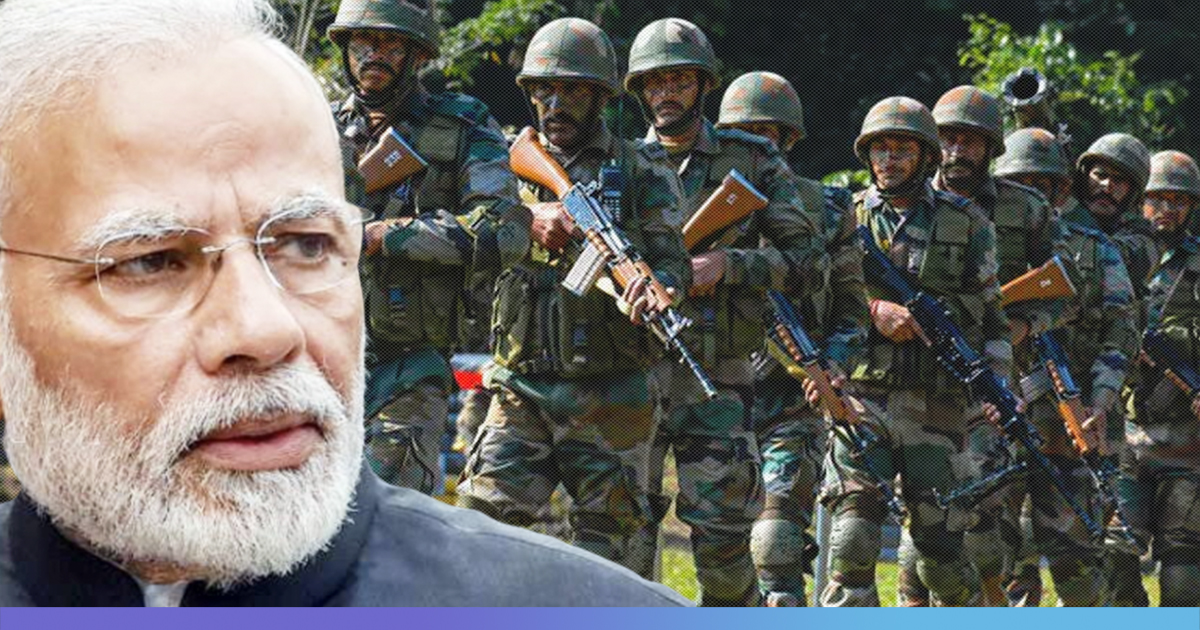
When Modi Says “Final Response,” It’s Not Mere Semantics
When Prime Minister Narendra Modi asserted that this time India’s response would be final, it was a signal to friends and foes alike: there will be no surgical strike with PR optics. This will be strategic retaliation, designed not to win applause, but to break the spine of Pakistan’s terror infrastructure.
India must remember, and remind the world, that it has endured far too many provocations- Pahalgam being only the latest. The cost of restraint has been steep. This time, restraint should not be on the table.
What About India’s Economy and Markets?
Let’s be clear. India’s stock market is resilient. The size and maturity of the Indian economy- having weathered the COVID-19 pandemic and emerged as the fastest-growing major economy – can absorb short-term geopolitical shocks. Pakistan, on the other hand, stands on the edge of an abyss. With mounting debt, negligible forex reserves, and political instability, Pakistan cannot survive a prolonged conflict or even a short but severe economic disruption.
The Farce Called Hafiz Saeed and Pakistan’s Moral Bankruptcy
Let’s speak plainly: Hafiz Saeed is a terrorist, not just in India’s eyes, but by UN designation. And yet, Pakistan treats him like royalty. Saeed, also known by the local codename “TATA,” lives in Lahore in a private residence-cum-mosque complete with a private park and is guarded by Pakistan’s elite SSG commandos. Two national IDs, state security cover, and public funds – this is what Pakistan offers a man who masterminded terror against another sovereign nation. It’s not just an insult to India, but a slap in the face of global counterterrorism efforts.
Pakistan claims Saeed is in jail. The truth? He’s far from it. He’s comfortably nested in Pakistan’s backyard while innocent lives are targeted across the border. And yet, instead of outrage, the international community mumbles about “restraint.”
India’s Digital Counterstrike and the Hypocrisy of “Peaceful Artists”
India has started taking digital action – blocking Pakistani Twitter handles masquerading as actors, influencers, and sportspersons. But let’s not stop there. Some Indian celebrities too have openly expressed admiration for Pakistan. It’s time to draw a line. Being an Indian public figure comes with responsibility. Sympathy for a terror-supporting nation cannot be brushed off as “art has no boundaries.” Let ED and other agencies ask tough questions. The time for naivety is over.
International Responses and Missed Opportunities
As expected, the US, China, Turkey, and Iran have called for de-escalation. The real tragedy? India’s delay in retaliating allowed this window of “international peace preaching” to open. Had India struck immediately after the Pahalgam attack, there would have been no time for this performative diplomacy. The global playbook always favors first movers. India must stop waiting for permission slips and instead set its own terms of engagement.

Ten Immediate Measures India Must Enforce
—Full-spectrum military retaliation—Land, air, and sea.
—Break diplomatic ties with Pakistan—immediately and unequivocally.
—Zero people-to-people contact—No visas, no exchanges.
—Trade embargo—Complete halt to all business.
—Ultimatum to MNCs—Choose: India or Pakistan.
—ED scrutiny of celebrities doing business with Pakistan.
—Ban all Pakistani media—TV, YouTube, OTT.
—Full blackout of Pakistani presence on Indian social media.
—No sports or cultural engagements—ICC or ICCI, none of it.
—Make monetary remittance to Pakistan a criminal offense.
These are not harsh measures; they are sovereign imperatives. Anything less will be seen as hesitation, and hesitation is the enemy of justice.
Has India Missed Its Strategic Window?
There’s concern that India may have missed its “iron is hot” moment. Indeed, when the intelligence was fresh and the rage palpable, immediate salvos from Pinaka systems (and not outdated Bofors) could have delivered a strong message. Delayed action always dilutes credibility. Pakistan understands this game, and plays it well. It’s time India reclaims the upper hand.
Pakistan’s Power Play – Appointing ISI Chief As NSA
Pakistan, too, is preparing for war, not through diplomacy but espionage. For the first time in its history, a serving ISI Chief, Lt Gen Asim Malik, has been appointed as NSA. This consolidation of intelligence and national security powers signals desperation, not confidence. Pakistan is centralizing its control amid paranoia, because it knows that India’s response, if unleashed fully, can break its back.
Why Pakistan Will Lose
The reason is simple: leadership and Pakistan’s Generals (Military people)
Pakistan is drowning under the weight of corrupt generals, political puppets, and radicalized policies. India, meanwhile, is stable, growing, and united under decisive leadership. Its military is professional. Its diplomacy is precise. Its economy is vibrant. The contrast could not be sharper.

The Last Bit
India must not blink. Not now. Not again.
This is not about revenge. This is about resetting the deterrent. This is about justice for Pahalgam and every other sin committed by the state machinery of Pakistan under the pretext of plausible deniability.
When a terrorist walks under the protection of a sovereign nation’s elite forces, that nation forfeits its right to diplomatic grace. The time for peace talks is over. The time for action has arrived.
Will SQUAD be Successful in Countering China?
By: Rishya Dharmani, Research Analyst, GSDN

The Biden administration had proposed SQUAD to bolster peace, mutual deterrence and freedom of navigation in the Indo-Pacific. The US Secretary of Defence, Llyod George said, “We have chartered an ambitious course to advance that vision together” at the sidelines of the April 2024 meeting of Defence Ministers – Richard Marles (Australia), Kihara Minoru (Japan), Gilberto Teodoro (Philippines) and Lloyd Austin (US) in the US Indo-Pacific Command (INDOPACOM) in Hawaii. The seeds for this grouping were sown in the preliminary meeting of defence ministers in the 2023 Shangri La Dialogue. Later, joint maritime patrols in the hotly contested South China Sea (SCS), followed by a trilateral summit of American, Japanese and Phillipino leaders, further cemented this partnership.
This institutionalisation of SQUAD comes at the hills of regime change in the Philippines from pursuing a passivist policy towards China towards the current term of President Ferdinand Marcos Jr’s shift towards collaborating with the US to strengthen ‘integrated deterrence’ in the South China Sea (SCS). Further, Australia, in recent years, has also shed its reticence in irking China of not entering into strategic partnerships with others in the region. Japan also looks to wean away from its pacifist constitution. The other major player in the region, India, forms QUAD with the US, Japan and Australia, but its insistence on ‘strategic autonomy’ while keeping independent ties with Russia and also resisting a more militaristic colour to this union has prevented QUAD from achieving strategic coherence and utility against formidable Chinese intransigence.
As a part of the larger trend of transitioning beyond traditional foreign policy tools, the Indo-Pacific has been the incubator of minilateral associations as the site of hot strategic competition. The growing intersection of economic, military, political, and cultural conflicts within and outside the region’s states has been a shot in the arm for such rebalancing strategies. Initiatives like QUAD, US-Republic of Korea-Japan Trilateral, AUKUS, and SQUAD, all grapple with traditional and non-traditional currencies of power politics. Both China and the US are spearheading activist diplomatic regimens to woo countries to broaden their network of friendly and cooperative states. Whether to funnel strategic rivalry by perusing ‘hard’ politics or pursue ‘human security’ and ‘soft’ issues (Singapore-Indonesia-Malaysia Malacca Straits Patrol) – minilateral initiatives in Indo-Pacific are blurring boundaries in strategic wargaming.
QUAD to SQUAD à a mere strategic dribble or a concrete gameplan?
Chinese commentators have seen SQUAD as a part of the declining hegemon’s (US) last-ditch attempt to ‘contain’ an inevitable Chinese ascendancy. The Dragon has accused the US of fielding proxies like the Philippines to provoke its “Ukrainization”. They claim that the United States is manipulating the Philippines and provoking it against China. This ‘cold war mentality’ will entrench regional divisions and mistrust, complicating the security atmosphere even more. This will force states to take sides and pose challenges to cooperation between China and Southeast Asian countries. This point is of relevance as China-ASEAN trade has increased four times since 2019. Furthermore, the Regional Comprehensive Partnership (RCEP) backed by China has been touted as the world’s biggest security pact by Al Jazeera, covering 30% of the global population and economy. This raises doubts about the efficacy of the strategic alignment of US-led groups with SCS littoral states.
But the era of simplistic geopolitical games is over as the age of alliances has eclipsed countries, especially from the Global South, valuing the strategic depth accruing from issue-based ad hoc coalitions. As Kissinger famously opined that ‘America has no permanent friends or enemies, only interests’ – this maxim underscores the need for adaptation to constantly changing geopolitical alignments. SQUAD is a much more focused attempt than QUAD to build pressure on China to temper its predatory attitude in SCS, especially the Taiwan Straits. Indian External Affairs Minister S. Jaishankar has already reasoned in the Munich Security Conference on February 19, 2022, that QUAD is not Asian NATO and simply about “four countries who have common interests, common values, (a) great deal of comfort, who happen to be located in the four corners of the Indo Pacific”. This counterbalance will perhaps be much more effective with replacement of a reluctant India with Philippines, an ally of United States, having a Visiting Forces Agreement with Australia and negotiating Reciprocal Access Agreement with Japan.
SQUAD, by aiming for greater military interoperability and strategic coordination, is a step forward from QUAD. Aiming to strengthen the joint response to a wide variety of traditional and non-traditional threats, SQUAD is a part of the “lattice-like” security architecture that the US has been cultivating in recent years. Moving away from an unpopular, costly and strategically dubious collective defence posture for sustaining a favourable balance of power, the United States, as the preeminent power, is now seeking mutual plurilateral partnerships. The greater shift from grand alliances to minilaterals underscores the need to counter a limited but imminent spectrum of threats in flexible and improvised groupings.
Informalism in Indo-Pacific diplomacy
With its roots in off-the-table diplomatic manoeuvres, the SQUAD needs to institutionalise and promise actionable partnership through regular punitive and preventive joint patrols in the South China Sea and across the Pacific, coordinated intelligence-sharing and maritime security cooperation, and modernisation and interoperability of partners’ defence systems. It needs to score a bullseye in its counter plans to Chinese aggression and hybrid grey zone warfare, which have seriously jeopardised regional security and cooperation. China smartly nibbles at others’ territory by playing the victim and enmeshing its target in disadvantageous bilateral negotiations, but with mechanisms like ASEAN and QUAD, South East Asian states can proffer a multilateral response to the Dragon’s increasingly threatening behaviour. Such institutionalised cooperative platforms signal to China that its targets are not alone and that it can be subjected to military and economic countermeasures.
However, there are problems with this interpretation of SQUAD for two reasons. First, SQUAD is not Asian NATO – an idea dumped by all relevant stakeholders but one that irks China. A collective defence system in South East Asia is not even a remote possibility because even if China is recognised as a common threat – the perception of the nature of its irredentism differs between Japan, Indonesia, the Philippines, Malaysia and others. Furthermore, despite China’s economic coercion by weaponising its supply chain dominance, surveillance infiltration, and trade dumping – South East Asian states are so deeply integrated and have benefitted from RCEP and bilateral arrangements with China that they will ponder twice before directly standing up to it. It is a chicken and egg situation of whether to float a militarised forum to respond to already prominent Chinese abrasions while also risking an enraged China.
Deep Chinese pockets have successfully orchestrated its ‘dual circulation’ strategy in which its manufacturing exports-driven economy earns foreign exchange by becoming the factory of the world and also caters to booming domestic demand. This has been aided by piloting gargantuan projects, massive in imagination and investments, all across the world to capture the markets and minds of the larger world, especially the Global South. Initiatives like the Global Civilisation Initiative are part of China’s attempt to replace the cultural industry of American hegemony and replace it with its own. It remains to be seen if SQUAD can provide real deterrence beyond the reputational deterrence of standing against a ‘quartet of chaos’ of autocracies.
Way Forward
An assessment of Chinese strategic culture is aptly summed by recalling an observation of its founding father, Mao Zedong, that power flows from the barrel of a gun. All revisionist powers like China are hardwired to maniacally try to bridge their strategic insecurities in the balance with the current superpower. Military capabilities and economic resourcefulness are the two rules of the game, with its theatre, the Indo-Pacific, transforming into a textbook case of Mandala dynamics. India already has its playbook astutely described by master strategician Kautilya. Guided by new age wisdom of eschewing war by pursuing ‘dialogue and diplomacy’, India has done well to shun the militaristic avatar of QUAD and by refusing to play the Western proxy. By retaining its value as an autonomous swing state, India has preserved sufficient systemic space for a cold war between the ‘Alliance of Democracies’ and ‘Eurasian Entente’ to cement.
China, meanwhile, has been pursuing its own brand of ‘value-based’ minilateralism against the ‘cold war mentality’ of block politics. It insists on a Global South and Asian solidarity against the erstwhile colonial and imperialist powers. It poses a ‘common future for mankind’ under the benign Chinese umbrella. This is a reproduction of the 1990s talk shop of ‘Peaceful Rise’ where Beijing successfully managed to use multilateral arrangements of liberal internationalism like WTO to their full potential to be the indisputable challenger state to the US. As is the fundamental tenet under Hegemonic Stability Theory, a rising power invariably faces off with the current one. China’s claim to power has been to promote ‘common prosperity’, and yet its actions within and outside its borders suggest otherwise.
As for SQUAD itself, someone has to stand up and build resilience and guarantee mutuality in acknowledging and addressing a common strategic irritant. Chinese mouthpiece Global Times has regularly lambasted the idea of Asian NATO, but China itself is pushing South East Asia into a Western embrace by failing to honour international laws. It refused to accept the 2015 ruling by the Permanent Court of Arbitration on the South China Sea dispute and recently scuttled an attempt by ASEAN to have a voluntary code of conduct for non-confrontational and non-interventionist open and free navigation. It has turned SCS and the broader Indo-Pacific into a playground for great power showdown. On the contrary, the continuous intrusion of the United States, an extra-regional alien power, in Asian subregions has delegitimised existing regional security architectures like ASEAN, East Asia Summit and even SAARC to reproduce dependencies of client states on superpowers. Such western interventions have precluded the natural emergence of an autonomous regional balance of power within Asia and raked up insecurities for Russia and China.
The spectrum of offensive tactics followed by China just manages to remain actions short of provoking a full-scale war – but it should be mindful that this rapidly changing, volatile, uncertain, complex and ambiguous (VUCA) world poses newer definitions and strategic thresholds. Unlike conventional war, the escalation ladder in grey zone kinetic warfare (as implemented by China) does not have a clear chain. All modern wars are wars of attrition, with even so-called major powers being embarrassed into the ‘Afghanistan Trap’ of never-ending conflicts with smaller and ‘insignificant’ states. China’s possible future misadventure in Taiwan can learn lessons from Iraq (US) and Ukraine (Russia).
In Senkakau Paradox, Michael E. O’Hanlon poses the danger of small states acquiring magnified and bloated perceptions in the balance of power politics and provoking war – a similar danger is faced in the South China Sea where small (and some artificial islands) risk igniting this region. In contrast, he proposes an ‘integrated defence’ of a mix of mild military reprisals and economic sanctions to deter the threat actors. Such measures are already in place – Mineral Security Partnership, IPEF, iCET etc. However, the deployment of geoeconomic tools is a dicey proposition as it can further push the adversary into evolving alternative and independent architectures like the proposed BRICS currency against the weaponisation of SWIFT and sanctions regimes by Euro-Atlantic countries.
An opposite reading would suggest that small states have very often been ignored and trampled in the interstate system. In the Indo-Pacific itself, the Pacific Islands are mentioned as an afterthought, and their existential concerns of being drowned by rising sea levels due to climate change are dismissed as ‘low politics’ matters. The superpowers only remember them for their strategic locales while eyeing their rich mineral resources. Indo-Pacific remains a unique stage of enactment of geopolitical rivalries as non-state actors are not major players, unlike in the Gulf, where Houthis have wreaked havoc. In this sense, traditional IR models of statism and power politics still seem to apply and offer prescriptive models for Asian hawks and doves.
Is Pakistan’s Army Imploding From Within? General Asim Munir’s Kashmir Gambit Raises Grave Questions
Pakistan Army Chief General Asim Munir may have lit the fuse for the deadly terrorist attack in Pahalgam. Just days before the assault, Munir delivered a provocative speech laced with dangerous rhetoric, referring to Kashmir as the “jugular vein” of Pakistan. “Our stance is very clear,” he thundered. “It was our jugular vein, it will be our jugular vein, and we will not forget it. We will not leave our Kashmiri brothers in their heroic struggle.”
This sounded like a clarion call for escalation. In fact, many believe Munir, facing mounting dissent and crumbling credibility within his own country, is desperate for a confrontation with India to distract from the internal rot hollowing out the Pakistani military.
But here lies the deeper question: is the Pakistani military, disillusioned and under siege at home, truly ready for a war its general seems to be lusting after?

A Crisis in the Ranks
The Pakistani military is facing an existential crisis like never before. The once-sacrosanct institution is now openly challenged on the streets and across social media. For the first time in Pakistan’s turbulent history, citizens are not just whispering but shouting against the generals, accusing them of political manipulation, corruption, and repression. This has deeply shaken the army’s image as the untouchable guardian of national security.
Amid this backdrop, rumours of mass resignations and internal dissent have flooded social media. Leaked documents claiming widespread desertions, advisories urging soldiers to stay loyal, and signs of unease within ranks have painted a picture of a fractured force. On April 26, a supposed advisory from Major General Faisal Mehmood Malik, head of ISPR, appealed to troops to “maintain morale” – a sign of desperation if true.
Although some reports have been debunked – Pakistan’s Dawn newspaper flagged linguistic inconsistencies in the documents – there’s no denying that morale is dangerously low. Fake or not, these viral rumours reflect a mood that is hard to ignore.
Disillusionment Runs Deep
General Munir may be beating the drums of war, but on the ground, his soldiers are fighting a different kind of battle, against exhaustion, fear, and betrayal. The military’s aggressive crackdown on PTI supporters after former Prime Minister Imran Khan’s arrest in 2023 alienated vast sections of the public. Civilians stormed military facilities, torched symbols of military power, and openly defied the generals. Over 3,200 citizens have since been subjected to military trials, with some sentenced to up to 10 years in prison – fueling a nationwide perception of authoritarianism.
Within the ranks, many soldiers themselves sympathize with PTI, and by extension, feel conflicted watching the military punish those they consider their own. This ideological rupture between the top brass and the rank-and-file is dangerous. It creates disunity in a force already stretched thin by relentless internal deployments.
Fighting Shadows on All Fronts
While the generals wage political wars in Islamabad, soldiers are being bled dry in Balochistan and Khyber Pakhtunkhwa. March 2025 was the deadliest month in over a decade, with 335 people killed in over 100 terror attacks. Islamist extremists and Baloch separatists continue to strike with deadly precision – ambushes, IED blasts, and targeted killings have become routine.
The mental and physical toll on Pakistani soldiers is immense. Constant redeployments, hostile terrain, and lack of clarity in mission objectives are grinding troops down. The fear is not just of the enemy outside, but the enemy within, the betrayal they feel from their own leadership.
A Dangerous Calculus
If General Munir hopes to rekindle insurgency in Kashmir as a strategic distraction, he may be gambling with a force that is near breaking point. The soldiers he wants to use for a proxy war are already under siege from disillusionment, dissent, and death at home.
The Pakistani military is no longer the monolithic, disciplined institution it once was. It is fractured, fatigued, and facing a credibility crisis of historic proportions. If this is the state of the army Munir hopes to march toward conflict with India, then Pakistan may be stumbling into a geopolitical catastrophe, led by a general who may be fighting to save not the nation, but his own grip on power.
)
Countdown to Conflagration, US Urges Restraint as Pakistan Warns of Imminent Indian Military Strike
Tensions between India and Pakistan, are teetering on the brink of military confrontation following the brutal terrorist attack in Pahalgam. As the possibility of war looms large, the United States has stepped in, scrambling to de-escalate a rapidly deteriorating situation with warnings of Indian military action within the next 24 to 36 hours.
In a press briefing late Tuesday night, US State Department Spokesperson Tammy Bruce confirmed that Washington is urgently engaging with both India and Pakistan, urging both nuclear-armed neighbours to “not escalate the situation.” Secretary of State Marco Rubio, she said, is expected to speak with the foreign ministers of both countries “as early as today or tomorrow.” Bruce emphasized that intense diplomatic engagement is underway “every single day,” warning that further escalation could trigger dire consequences not only for South Asia, but the world.
The diplomatic scramble follows Pakistan’s stunning claim that it possesses “credible intelligence” of an impending Indian military operation. Pakistan’s Information Minister Attaullah Tarar declared on Wednesday that India is planning a strike under what he called “baseless and concocted allegations” regarding Pakistan’s role in the April 22 Pahalgam attack.
“Pakistan has credible intelligence that India intends carrying out military action against Pakistan in the next 24 to 36 hours,” Tarar posted on X, adding that Islamabad would “respond assuredly and decisively.”
The timing of this declaration is chilling. Just hours earlier, Indian Prime Minister Narendra Modi, in a high-level security meeting, had granted the armed forces “complete operational freedom” to decide the mode and timing of the country’s response.
India, already fuming after identifying cross-border links to the Pahalgam carnage, has launched a raft of punitive actions against Pakistan.
These include:
–Downgrading diplomatic ties,
–Expelling Pakistani military attachés,
–Revoking all Pakistani visas issued from April 27,
–Shutting down the Attari land-transit post, and
–Suspending the historic Indus Waters Treaty of 1960.
In a last-minute appeal to the global community, Pakistani Prime Minister Shehbaz Sharif urgently reached out to UN Secretary-General Antonio Guterres, pleading for international intervention and demanding a “neutral investigation” into the Pahalgam attack. Islamabad continues to deny any involvement, even as its rhetoric grows increasingly defensive and defiant.
Pakistan has warned that the “onus of any escalatory spiral and its consequences shall squarely lie with India.” But with military formations mobilizing, diplomatic channels buzzing, and nerves fraying across borders, the subcontinent stands dangerously close to a flashpoint.
The next 36 hours could determine whether the region steps back from the edge, or plunges headlong into yet another devastating conflict, but for India, this is a crucial moment and one that it should not let slide, given Pakistan’s constant provocation along the LOC and terror attacks.







